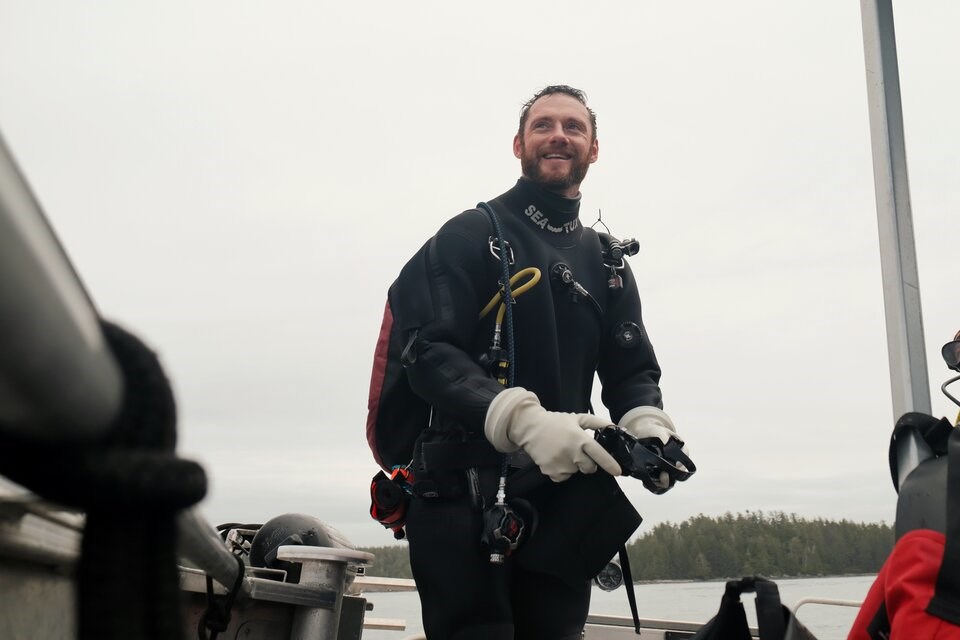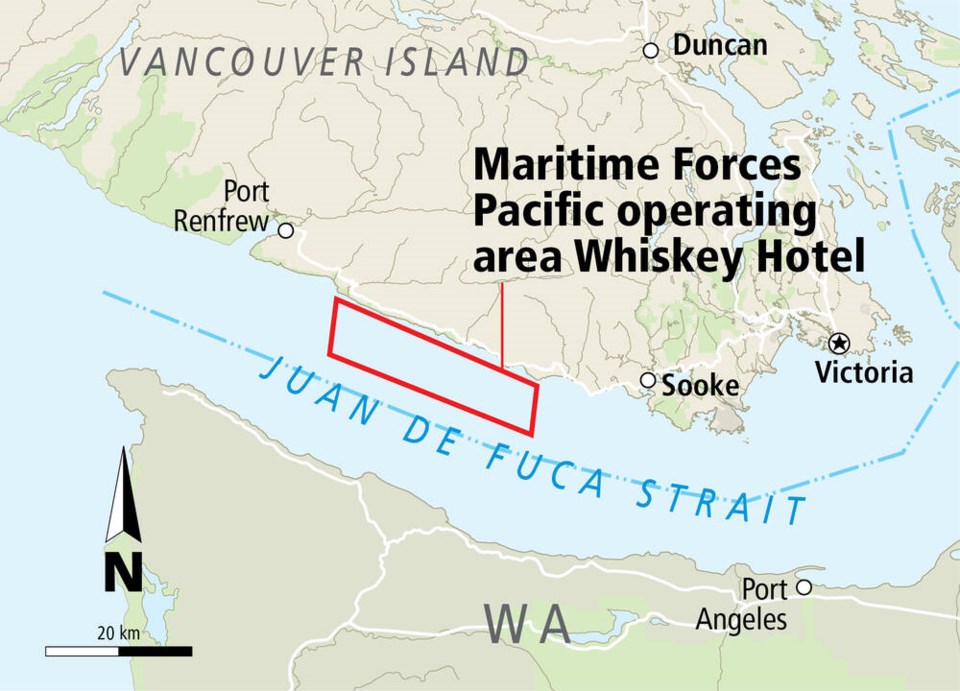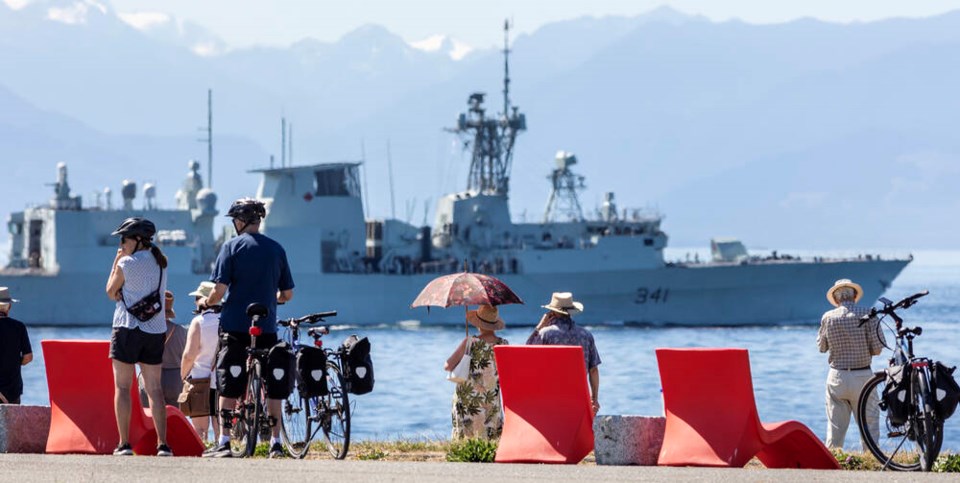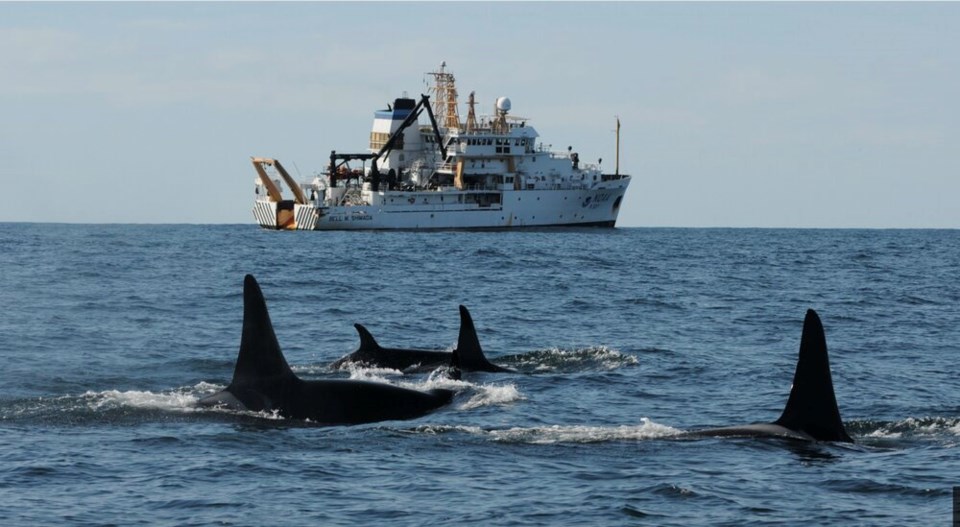A report commissioned by the Canadian military looking at the impacts of a live-fire training area on critical endangered whale habitat was too narrow to understand the potential effects on fish — the whale’s food — and failed to gauge how much noise pollution was put out by warships, according to a new peer-reviewed study.
The , published in the journal Marine Policy, assessed a report carried out by Golder Associates on behalf of the Department of National Defence after it decided to initiate a three-year pause on military activity within the Whiskey Hotel zone, a 330-square-kilometre training area in С����Ƶ’s Strait of Juan de Fuca.
The narrow strait is a major corridor for shipping, an active military training area for U.S. and Canadian militaries, and critical habitat for southern resident killer whales, an endangered species that has stagnated at 73 individuals in recent years.
In January 2023, the Canadian Armed Forces said it would resume training in Whiskey Hotel after pausing operations in 2019. The 30-by-11-kilometre swath of water lies about a kilometre off land between Sooke and Port Renfrew. In the past, the U.S. Coast Guard used the gunnery range about 30 times a year, more than anyone else. Training runs lasted 10 to 15 minutes and involved firing 200 rounds from weapons like the MK38, a 25 mm chain gun mounted on a turret, or smaller tripod mounted machine guns like the M240, says the report.
Kieran Cox, who led the study into the Golder report, is also a long-time diver across Vancouver Island who has spent years documenting the impacts of noise pollution on marine life. A researcher at Simon Fraser University’s Department of Biological Sciences, Cox praised the military-commissioned report as a step in the right direction. But his investigation into the report also pointed to a number of holes.

Cox said the report did a good job examining how to limit the acoustic impacts of small arms munitions — including everything from high-powered service pistols to machine guns fired from ships and aircraft.
“These put out sound levels that are pretty considerable — up to 180 decibels,” said Cox.
The DND-commissioned report found firing a Browning M2 or MK38 machine gun could create behavioural disturbances for a breaching whale or lounging sea lion as far as 15.6 kilometres away. Describing the impacts as “negligible,” the report also notes it is unlikely underwater communication between killer whales will be affected by noise from weapons training.
But Cox and his colleagues — who came from the University of Victoria, Cornell University and the University of Florida — warned that the species’ calls, whistles and echolocation clicks span frequencies that can overlap with munitions training.
The most conservative models in the report suggested creating safety zones of 219 metres above the surface and 28 metres below the surface. It found mitigating the effects of noise from munitions could be achieved through a combination of marine mammal reporting, avoidance zones, awareness training and limiting training during low visibility conditions. It also recommended creating new cease-fire procedures and conducting visual and radar monitoring.
“Halting the activity, putting on them the onus to look into the impacts,” said Cox of the DND’s actions. “Taking this action is commendable.”

Military vessel noise could be impacting mammals, fish
The report did not address the impact of vessel noise on wildlife, something scientists have long warned about.
Noise from the 134-metre HMCS Ottawa, which as a Halifax-class frigate has been active in “Whiskey Hotel,” was recorded among 19 U.S. and Canadian warships passing through Haro Strait. The observations indicate the ship could produce underwater noises that could impact certain cetaceans beyond the report’s largest recommended safety zone of 219 metres.
The DND-commissioned report also did not look at how those acoustic disturbances affect fish and invertebrates in the area, said Cox.
At least 50 fish along С����Ƶ’s coast hum and call like whales do. Take the plainfin midshipman, a mottled brown and olive deep water dweller that comes to the shallow intertidal zone during breeding season. Some males will sneak into other nests to “steal” fertilizations. Others aggressively compete for the rocky nests, guarding them and humming to attract females.
The quality of the hum — how long and loud it is — matters, said Cox.
“Its entire history is determined by how well it can sing,” he said.

Outside of endangered species protection plans, Canada currently doesn’t have regulations limiting noise pollution in the ocean. And even once the federal government releases those guidelines, the Department of National Defence will likely be exempt on national security grounds.
All the more reason, said Cox, to both praise the military for taking action and pushing it to do more within view of the public.
“We as a society use the ocean in many ways,” Cox said.
“It’s important to have the public aware of this conversation. People have to be able to see it.”




